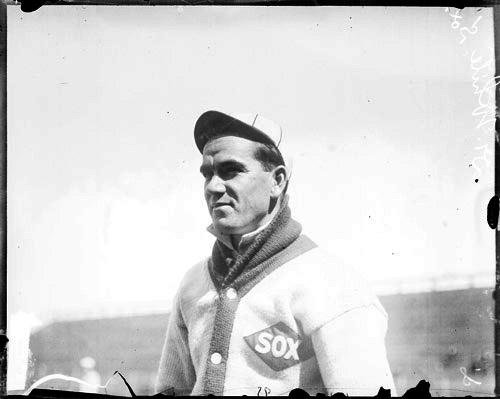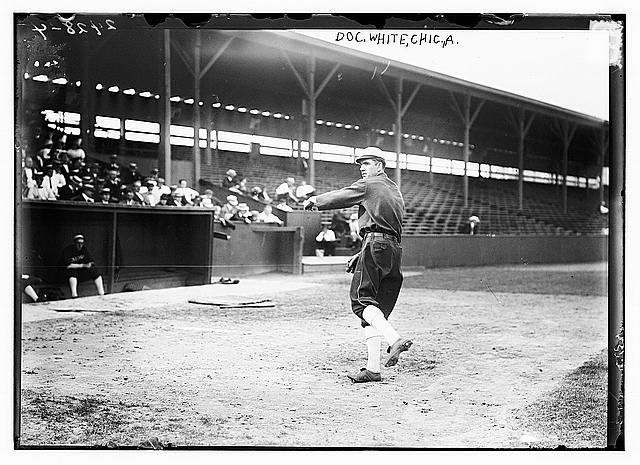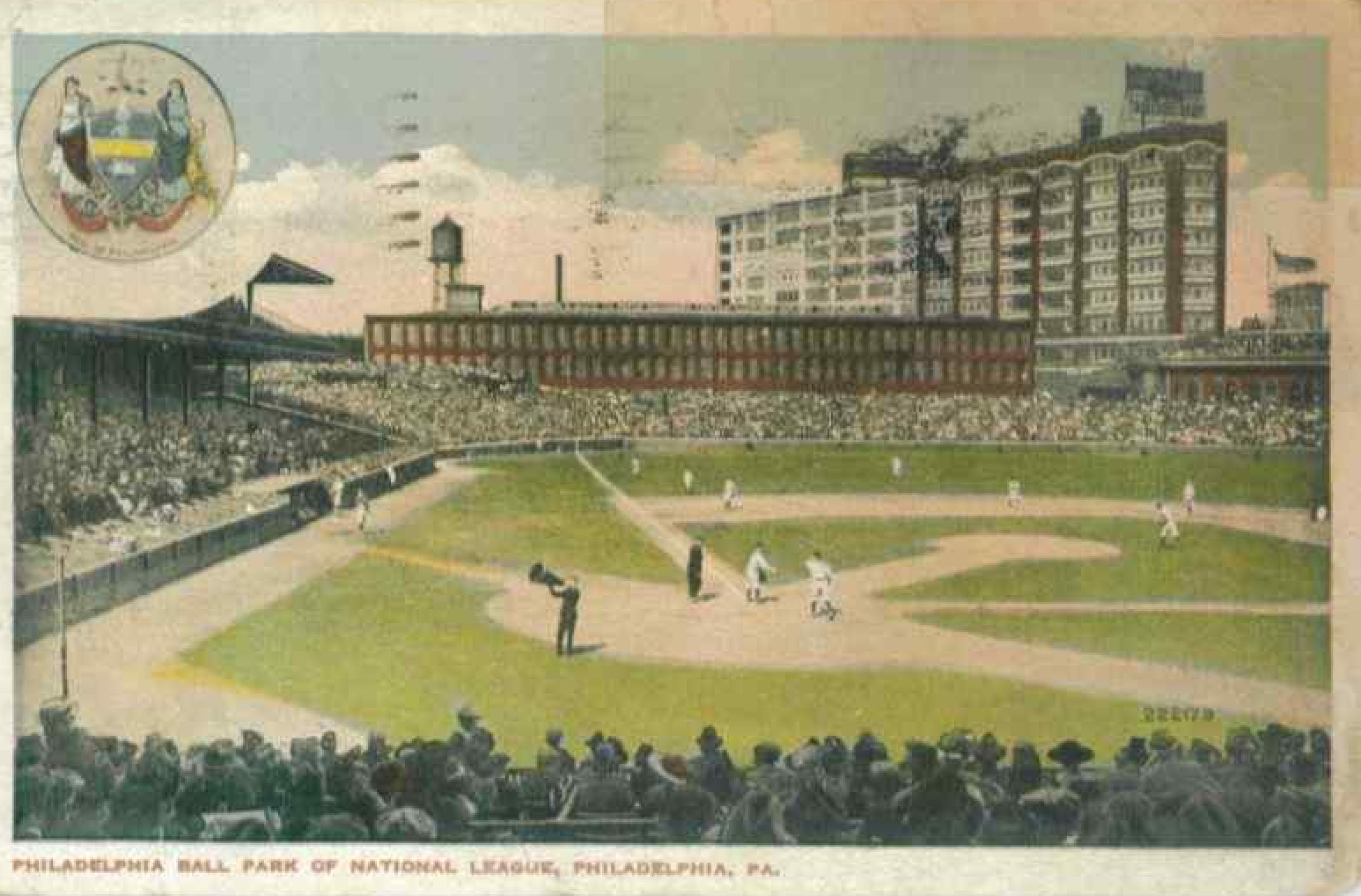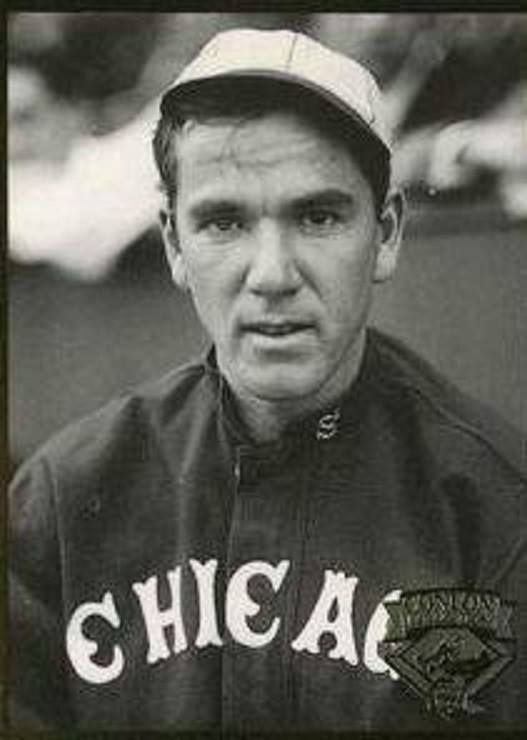Panoramic Photo Above:
Baker Bowl, Philadelphia, PA

Baseball History Comes Alive Now Ranked As a Top Five Website by Feedspot Among All Baseball History Websites and Blogs!
(Check out Feedspot's list of the Top 35 Baseball History websites and blogs)
Guest Submissions from Our Readers Always Welcome! Click for details
Visit the Baseball History Comes Alive Home Page
Subscribe to Baseball History Comes Alive
Free Bonus for Subscribing:
Gary’s Handy Dandy World Series Reference Guide
Mike Janacek returns today with an interesting essay on the long-forgotten Deadball Era star, Doc White. I was familiar with him as a standout pitcher for the 1906 World Series champion World Series champion White Sox, but, as I discovered, he possessed many other talents not normally associated with ball players from that era. I always find it enlightening to learn more about the game’s forgotten stars, so I think you’ll enjoy what Mike has for us today. -GL
Another Edition of Baseball’s Forgotten Stars:
Guy Harris ‘Doc’ White
“Respect the game and it will reward you in return.” – Doc White
While “Doc” is a common nickname in baseball, much like Dutch, Buck, and Mickey, Guy Harris White was actually a doctor, having graduated from Georgetown University School of Dentistry.1

White was an accomplished violinist, songwriter, and balladeer. He collaborated with Ring Lardner to write the song, ‘A Little Puff of Smoke, Goodnight,’ which became a bestseller. He coached college baseball, owned a team in the Texas League, eventually became a traveling evangelist, and still managed to squeeze in thirteen big-league seasons while getting a degree in dentistry.2
White began his career in 1901, signing with the Philadelphia Phillies for $1,200 and a season-ending bonus of $200 if he pitched well. Going straight from college to the major leagues, Doc won 14 games in his rookie year, and the Phillies finished second. The following season, White won 16 games while the Phillies struggled, winning 56 games and finishing in seventh place, 46 games behind the first-place Pittsburgh Pirates. The Phillies finished seventh in hits, runs scored, and batting average among the eight teams in the National League.3
During the off-season, a bidding war erupted between Philadelphia and the Chicago White Sox for his services. He ended up in Chicago, where he spent the next eleven seasons. From 1903 to 1906, Doc averaged 17 wins per season, and his ERA was in the top four each year. On September 12, 1904, Doc White began a run of incredible pitching performances. He shut out Cleveland 1-0, and four days later, he took a no-hitter into the eighth inning and gave up a triple with one out to Tom Jones. Jones was thrown out at the plate, and White had his second shutout. On September 19, he shut down the Tigers on two hits and six days later pitched his fourth consecutive shutout, beating the Athletics 4-0. His fifth successive shutout was against the New York Highlanders on September 30. Two days later, White gave up a first-inning run, and his streak of shutouts came to an end at five. It would be a record finally broken 64 years later by Don Drsydale. 4

Doc led the League in 1906 with a 1.52 ERA and an ERA+ of 167. The Sox won the pennant and faced their cross-town rival, the Chicago Cubs in the World Series. The White Sox, dubbed the “Hitless Wonders” for their lack of offense, were heavy underdogs. After winning their first game, the Sox sent White to the mound against Ed Reulbach. White was hit hard, lasting three innings as the Cubs won the game 7-1. After splitting the next two games, White was called into Game Five in relief of Ed Walsh with an 8-6 lead in the 7th. He threw three scoreless innings for the save. The next day, White started Game Six and pitched a complete game, winning 8-3 and capturing the World Series.
An articulate and bright individual, White was sought after by newspaper reporters looking for interviews. The Chicago Tribune ran a regular column called “Whites’ Words of Wisdom.” The column offered White’s thoughts on various baseball topics. He was well respected by his peers and was chosen by teammates to represent the team at the first meetings of the Players’ Union in 1912. At one point, the team owner asked for his assistance in designing the team’s uniforms.5
Following the World Series season, White had his best year to date, winning a league-leading 27 games with an ERA of 2.26. What was incredible during the season was that in 291 innings, White only walked 38 batters. On September 11, White intentionally walked Tom Jones, ending a streak of 65.1 innings without walking a batter. This record would be broken in 1962 by Bill Fischer.
Despite a great season in 1908, winning 18 games, White was overshadowed by teammate Ed Walsh, who won 40 games and led the League in nearly every major pitching category. The pennant race went down to the last day of the season, and White was sent out to pitch on one day’s rest. He didn’t make it out of the first inning, getting one out, giving up two runs on three hits as the Tigers won. The loss cost the White Sox the pennant and manager Fielder Jones his job. At this point in his life, White had stopped practicing dentistry and had become more active in his church. He led the choir, wrote and performed some music, and did short vaudeville tours through his church.
Having won 143 games in his first eight seasons, Doc and the team struggled over the final five years of his career, with his record being 46-50. In 1909, he achieved a career highlight by beating Walter Johnson and the Washington Senators 1-0. Five days later, facing Johnson again, he pitched 17 innings in a game that ended in a 1-1 tie.
After the 1913 season, in which he was 2-4 with a career-high season ERA of 3.50, Doc retired at the age of 34. He pitched a couple of years in the Pacific Coast League. In 1915, he managed in Vernon and Denver. He became part-owner of the Fort Worth team in the Texas League until it was shut down due to World War I. Doc later managed the Waco and Muskegon teams. In 1921, he returned to his old high school as a coach and physical education teacher, a position he held for 28 years. Additionally, he worked as the pitching coach for the University of Maryland and the basketball coach at Wilson Teachers College. He finally retired in 1949 at the age of 70.
Doc finished his career with 189 wins, 156 losses (.547), an ERA of 2.39, and an ERA+ of 113. In 3,041 innings pitched, he struck out 1,384 batters and demonstrated his outstanding control, walking just 670, never more than 72 in any season. As a hitter, he was above average for a pitcher, hitting .217, with two home runs, 147 runs scored, and 75 RBIs. He also played 85 games in the field. At the time of his retirement, only Eddie Plank and Jesse Tannehill had won more games as left-handed pitchers. Truly a man of many talents, Doc White was also a heck of a ball player.
Mike Janacek
Footnotes:
- Baseballbiogrraphy.com. Doc White.
- “Doc White,” Wikipedia page, accessed August 13, 2025
- “Doc White,” Wikipedia page
- “Doc White,” Wikipedia page
- John Bennett. Doc White. Sabr.org.
- Bennett, Doc White, SABR BioProject.
Photo Credits: All from Google search
Subscribe to Baseball History Comes Alive. FREE BONUS for subscribing: Gary’s Handy Dandy World Series Reference Guide. https://wp.me/P7a04E-2he


